
THE GRIP FACTOR: HOW GRIP MECHANICS MANAGE FIREARM RECOIL
Grip is one of the fundamentals of marksmanship, and establishing a proper grip is critical for consistent accuracy. The first shot from a firearm is usually straightforward, but controlling the gun for accurate follow-up shots can be challenging. Each shot represents a small explosion happening in your hands, making recoil control essential. This article will examine the science of recoil in relation to grip.
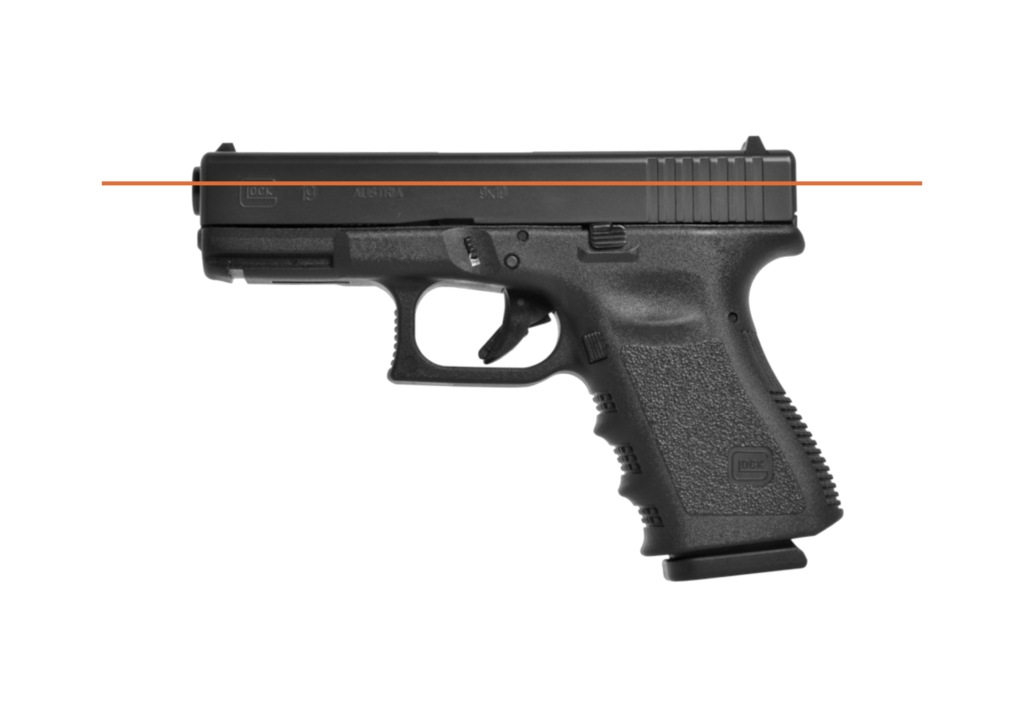
When a firearm discharges, the forces generated act along the bore axis—the line through the barrel where the explosion occurs. The bullet is propelled forward by expanding gases, and these same gases simultaneously exert force backward on the firearm, causing recoil and cycling the mechanism, such as the slide.
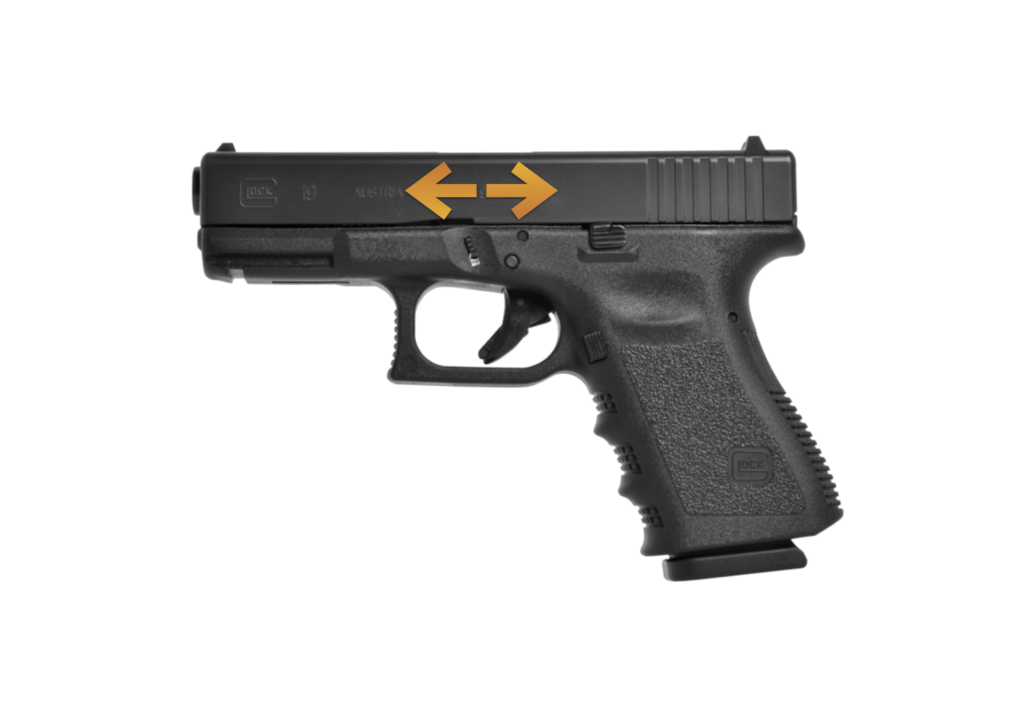
The force generated during discharge can be described by Newton’s second law:

In other words, the force (F) is equal to the mass (m) multiplied by acceleration (a). Since the bullet accelerates forward rapidly, the firearm experiences an equal and opposite force backward.
Newton’s third law further clarifies this principle: for every action, there is an equal and opposite reaction. As gases push the bullet forward, the bullet pushes back against the gun, generating recoil.
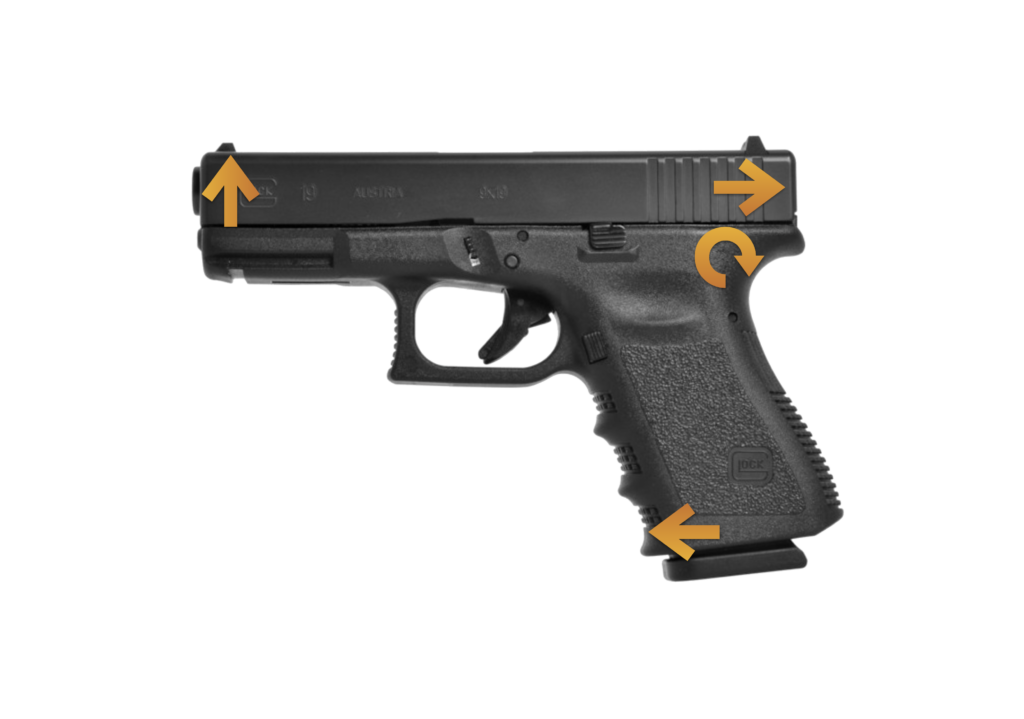
Because your hands and body support the firearm, recoil transfers into you. The slide and barrel, searching for the path of least resistance, tend to pivot upwards due to their positioning above the grip. The firearm pivots around the axis just above your grip, creating muzzle rise.
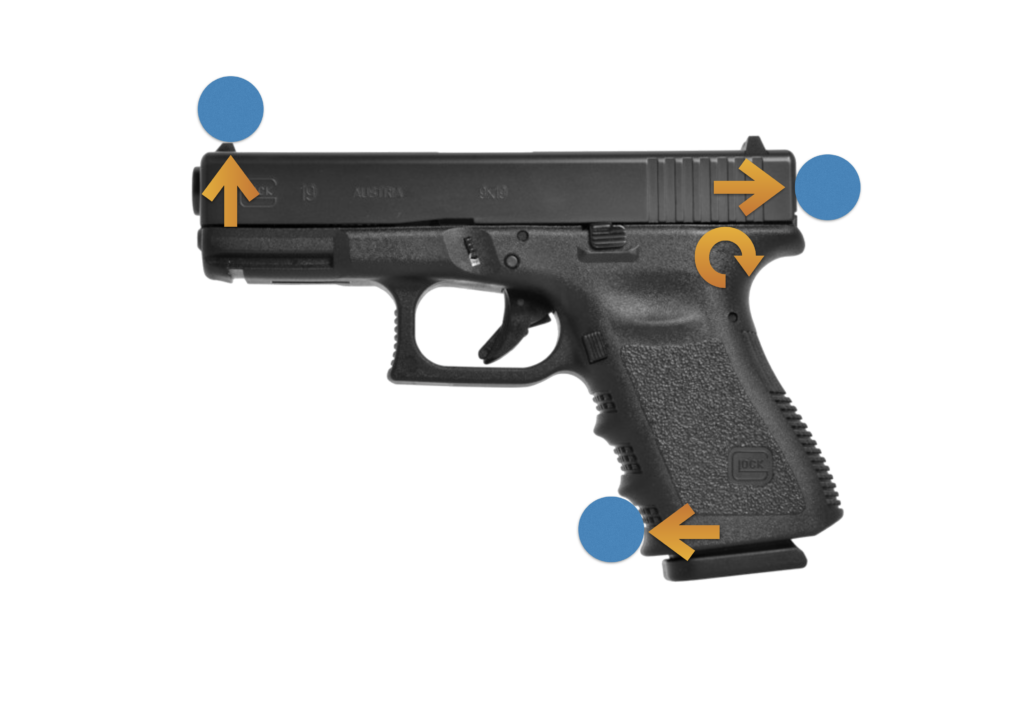
Ideally, to counteract recoil effectively, we would apply controlling pressure at these three points: high above the grip, middle, and bottom. However, due to the slide’s necessary movement, the top two points are unavailable for direct control.
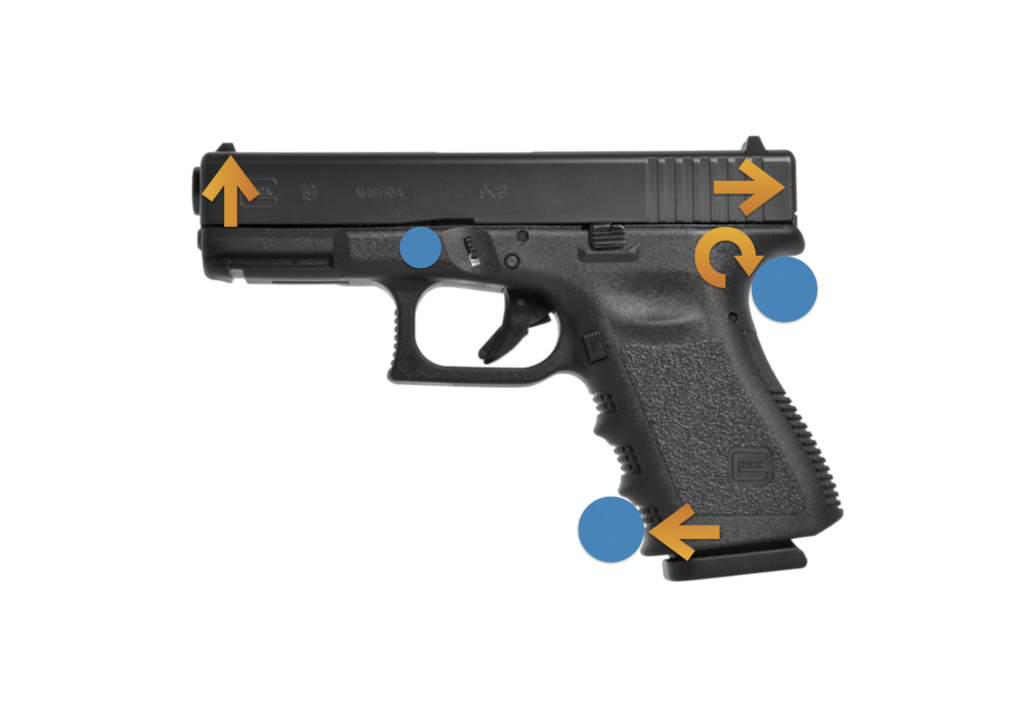
Realistically, we must optimize the available points by:
- Placing our primary hand as high on the grip as possible, minimizing the pivot point.
- Using the pinky of our support hand to exert backward pressure against the lower portion of the grip, resisting forward motion.
- Positioning the support thumb firmly along the firearm’s frame to provide resistance against upward muzzle flip.

Friction can further aid recoil control. The frictional force depends on the coefficient of friction (texture and grip surface) multiplied by the normal force (grip pressure):

Maximizing surface contact and grip pressure increases friction, ensuring the firearm stays securely “married” to your hands during recoil. Grip friction effectiveness depends significantly on hand placement, grip strength, elbow positioning, and consistent initial grip formation.
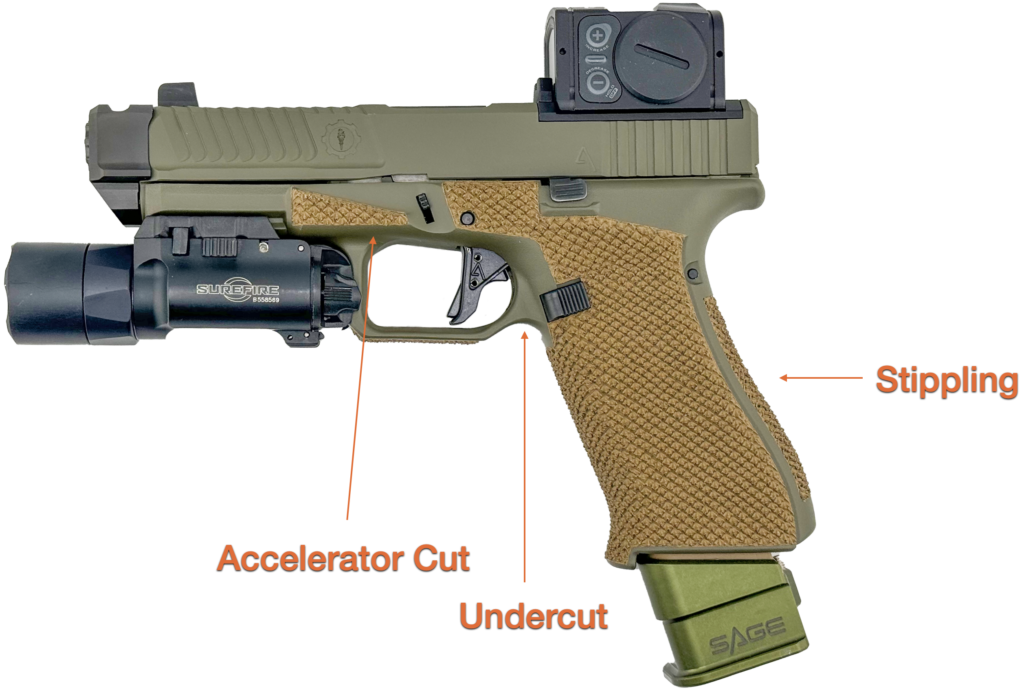
Performance modifications to firearms can further enhance recoil control:
- Trigger Guard Undercut: Removing material beneath the trigger guard allows a higher grip, providing resistance as close to bore axis as possible.
- Grip Enhancements: Grip tape, Talon grips, or stippling provide additional friction, keeping hands securely in contact with the gun.
- Accelerator Cut: A ledge cut into the frame provides the thumb a consistent spot to apply downward pressure, further reducing muzzle rise. Stippling can also be added to this cut for increased friction.
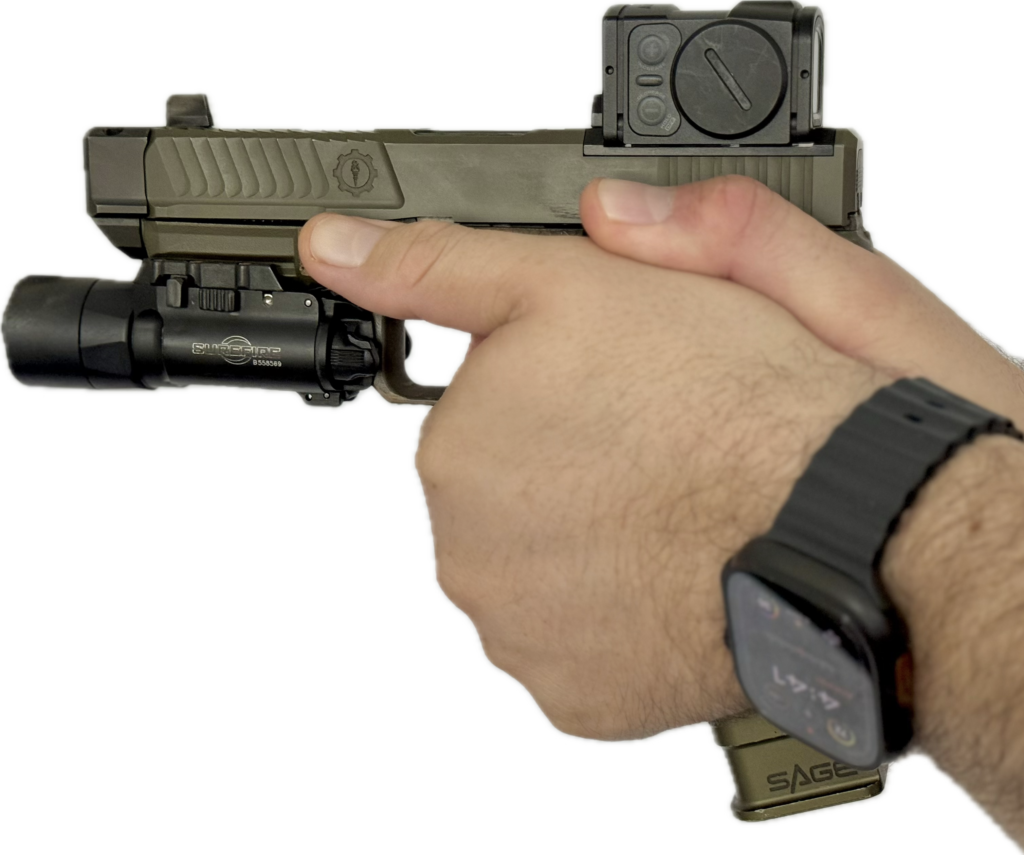
Ultimately, the goal isn’t to prevent recoil entirely but to efficiently manage it. A solid grip connection enables recoil energy to be quickly absorbed by your body mass, dispersing the forces effectively and returning the firearm consistently and rapidly to your intended point of aim.
